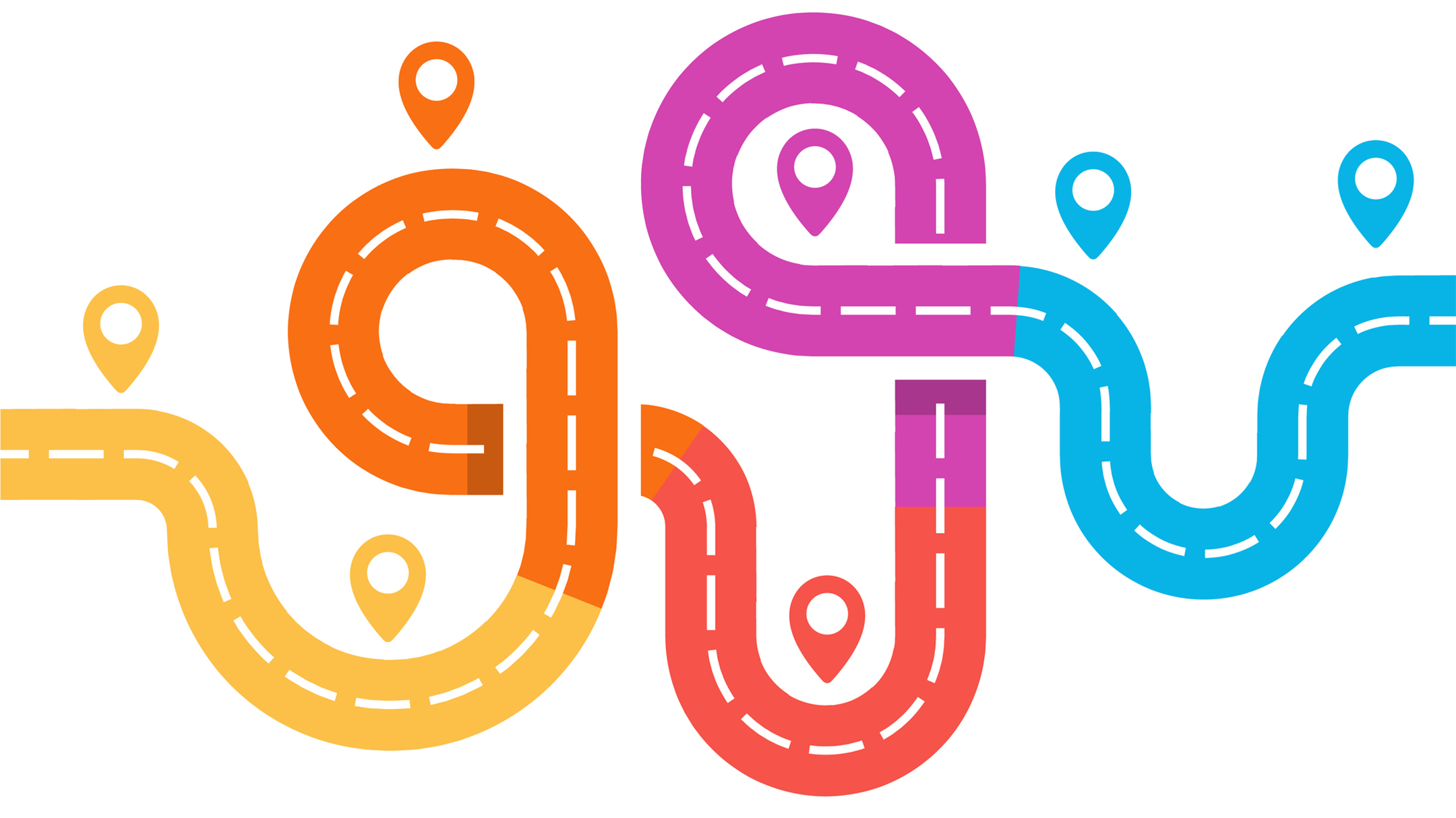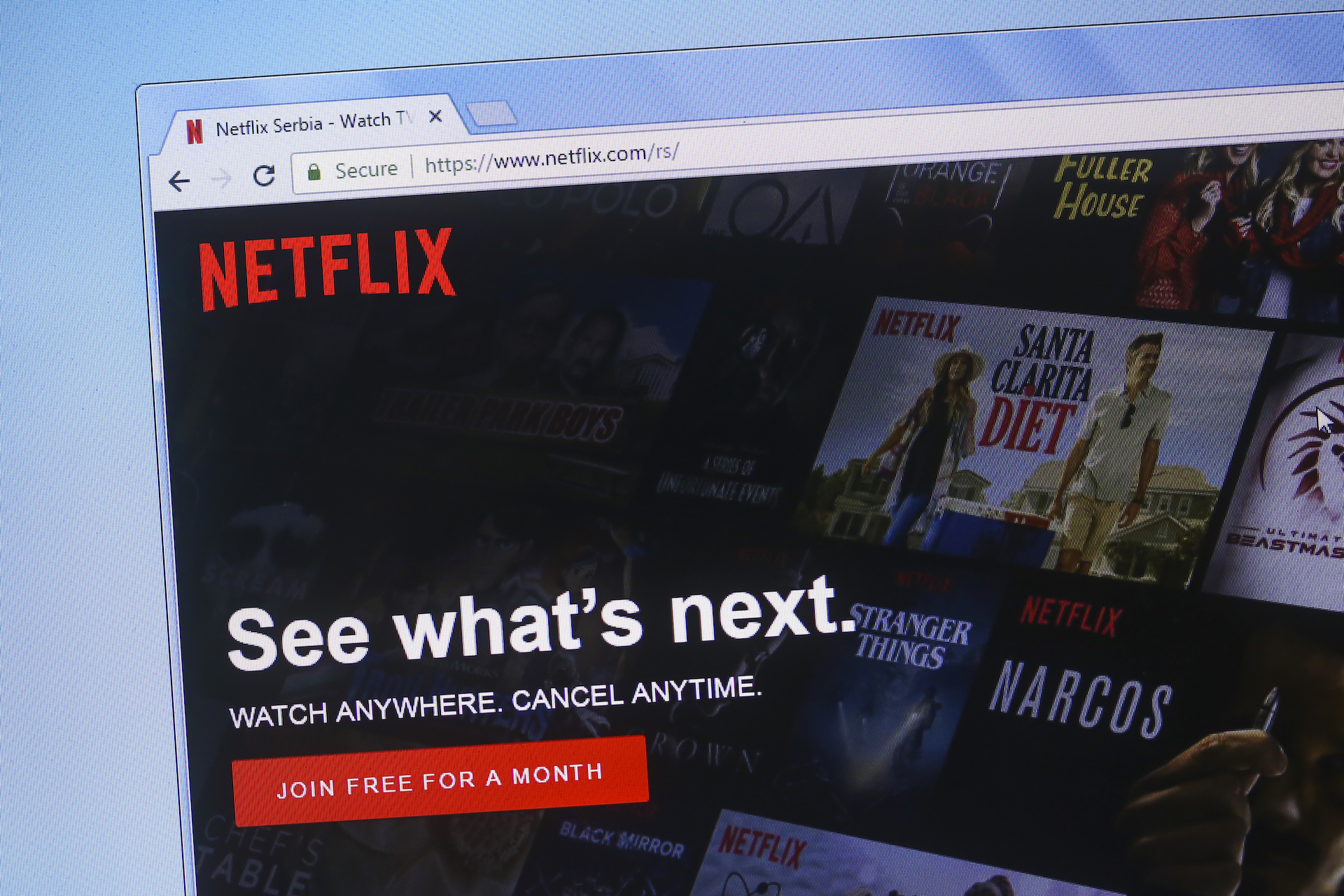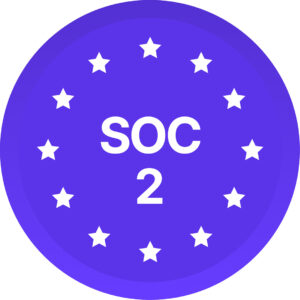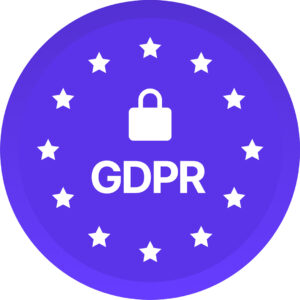Diversity, Equity, and Inclusion (DEI) have evolved from ethical considerations to strategic essentials that underpin competitive advantage in modern businesses. Leaders now recognize effective DEI programs as catalysts for innovation, employee satisfaction, and enhanced market competitiveness. Yet, executing these programs effectively requires overcoming traditional barriers and leveraging innovative, technology-driven solutions. This comprehensive guide explores the limitations of existing DEI tools, the challenges of quantifying DEI’s return on investment (ROI), and how tailored solutions can convert DEI efforts into measurable success.
The DEI challenge
The complexities of DEI demand precision in the tools and strategies employed, adapting to the evolving needs of a diverse workforce. Here we explore why traditional tools are inadequate and the importance of measuring the effectiveness of DEI initiatives.
Why Traditional Tools Fall Short
Traditional DEI management tools often fail to meet the complex needs of modern organizations. These legacy systems usually lack the necessary interactivity and do not provide real-time engagement data or deep insights. Consequently, leaders find themselves equipped with outdated tools that are insufficient for the nuanced demands of effective DEI management, leading to inefficiencies and missed opportunities for genuine progress. Let’s explore a few specific examples to illustrate these shortcomings:
- Limited customization: Consider a global company with diverse cultural backgrounds across its teams. Traditional DEI tools might offer standardized surveys that fail to account for regional nuances, resulting in data that does not accurately reflect the unique challenges and needs of different employee groups. This lack of customization can lead to irrelevant insights and ineffective interventions, ultimately hindering the organization’s ability to foster an inclusive environment that resonates with its diverse workforce..
- Delayed reporting: In fast-paced environments like retail or hospitality, understanding employee sentiment and experiences in real-time can be crucial for addressing emerging issues promptly. However, if a DEI tool only delivers survey results quarterly or even less frequently, management may miss critical windows to address issues like discrimination, microaggressions, or team discontent. These delays can potentially exacerbate small problems into larger crises, undermining the organization’s efforts to create a truly inclusive and supportive workplace culture.
- Inadequate analysis: A technology firm might use a traditional tool that tracks basic metrics such as diversity in hiring. However, without deeper analysis capabilities, it’s challenging to understand the underlying factors affecting retention and promotion disparities among underrepresented groups. Without these insights, the firm cannot develop targeted strategies to ensure equitable career progression opportunities, potentially perpetuating systemic barriers and hindering its ability to attract and retain top talent from diverse backgrounds.
- Poor integration with other systems: Many traditional DEI tools operate in isolation from other HR systems, making it difficult to correlate DEI metrics with other business outcomes. For example, a company might struggle to link diversity data with performance metrics, missing out on understanding how diversity impacts business performance or vice versa. This siloed approach limits the organization’s ability to make data-driven decisions and leverage DEI as a strategic asset for driving overall business success.
- Lack of real-time interaction: In sectors like finance or consultancy, where team dynamics can rapidly shift, DEI tools that do not allow for real-time feedback or interaction fail to capture the immediate sentiments of employees following significant events or changes within the company. This delay can prevent timely and effective management responses to critical team dynamics, reducing the potential for fostering a supportive and inclusive workplace culture that adapts to the ever-changing needs of its workforce.
The struggle to quantify DEI ROI
Quantifying the return on investment for DEI initiatives presents a significant challenge. Leaders face increasing pressure to demonstrate not only financial returns but also the social impact of these efforts. The absence of direct, quantifiable data complicates building a compelling business case for sustained investment in DEI, highlighting the need for tools that provide clear, actionable metrics.
Consider a company that implements a new DEI training program aimed at reducing unconscious bias among its managers. The goal is to improve decision-making processes and employee engagement levels. While the company might track participation rates and immediate feedback from training sessions, connecting these data points to broader employee engagement or retention metrics is complex. Employee engagement is influenced by a wide range of factors, from market conditions to changes in management practices, to individual career development opportunities, making it difficult to isolate the impact of the DEI program alone.
For instance, if employee retention rates improve following the training, it might be tempting to attribute this entirely to the DEI efforts. However, without rigorous control measures and a clear causal linkage, it’s challenging to definitively prove that the DEI training was the sole or even the primary factor contributing to the improvement. This difficulty is compounded in dynamic business environments where multiple initiatives might be rolled out simultaneously, each influencing the company’s culture and employee satisfaction in overlapping ways.
To effectively measure ROI and build a compelling case for sustained investment in DEI, organizations need tools that can capture real-time, relevant data and link DEI initiatives directly to both financial and social outcomes. This capability would not only help in quantifying the impact but also in refining DEI strategies based on empirical evidence.
Overcoming these challenges requires a comprehensive, data-driven approach that leverages advanced technologies and customizable solutions tailored to the unique needs of each organization. By addressing the limitations of traditional tools and empowering leaders with quantifiable insights, organizations can transform DEI from a box-checking exercise into a strategic imperative that drives tangible business value.
Beyond compliance: DEI as a strategic advantage
DEI extends far beyond compliance; it’s a core strategy that enriches organizational culture and drives substantial business outcomes. Recognizing and leveraging DEI as more than just a regulatory necessity is essential for leaders aiming to create sustainable competitive advantages in today’s diverse and evolving business landscape.
Creating a culture of belonging
Building a genuine culture of belonging involves more than simply updating policies or conducting annual training sessions. It requires a fundamental shift in organizational values, where every employee – regardless of their background, identity, or role – feels valued, respected, and heard. This transformative culture supports a workplace environment where diversity is celebrated and embraced, enhancing employee engagement, fostering innovation, and driving success across all levels of the organization.
Key steps to create a culture of belonging:
- Commitment from the top: The journey towards an inclusive culture must start with genuine commitment from leadership. Company leaders should actively demonstrate their dedication to DEI principles, not just through words but through consistent actions. Leaders should also be trained to understand their own biases and how these can inadvertently affect decision-making processes and interactions with others.
- Inclusive communication: Effective communication is essential for creating a sense of belonging. Organizations should utilize multiple channels, acknowledging that people absorb information in different ways, and ensure that all critical information is accessible to everyone, regardless of their role or location within the organization.
- Support for Employee Resource Groups: Actively support and fund Employee Resource Groups (ERGs) that cater to different demographics within the organization. These groups provide a voice for employees from underrepresented groups, fostering a sense of community and shared experiences. Encourage cross-group events and initiatives to increase understanding and cooperation between different ERGs, promoting a truly inclusive environment.
- Open feedback channels: Implement regular surveys, focus groups, and open forums where employees can express their views on the company culture and DEI practices without fear of repercussion. These feedback channels not only provide valuable insights but also demonstrate the organization’s commitment to continuous improvement and employee empowerment.
- Mentorship programs: Offer mentorship programs that connect employees from different backgrounds and organizational levels, promoting knowledge sharing and fostering a sense of belonging. These programs create opportunities for personal and professional growth, while fostering cross-cultural understanding and collaboration.
- Fair and transparent policies: Ensure that all organizational policies, including those related to recruitment, promotion, and disciplinary procedures, are clear, fair, and transparently applied. This consistency and fairness are critical for building trust and fostering a culture where all employees feel valued and respected.
Empowering stakeholders: engaging employees at all levels
Achieving true DEI success requires engaging all employees, from entry-level positions to the C-suite. This broad engagement ensures that DEI principles are woven into the fabric of daily business operations, creating a shared sense of responsibility and ownership. Empowering every employee to contribute to DEI discussions and decisions builds a more inclusive environment that supports both personal and professional growth.
DEI discussions are crucial dialogues that take place at various levels within an organization, involving topics that affect not just the workplace culture but also the personal and professional growth of every employee. These discussions can be formal or informal and can cover a wide range of topics, from parental leave policies to unconscious biases in decision-making.
Demystifying DEI through informal methods
While formal DEI training and discussions are important, organizations can also foster a culture of inclusion by incorporating DEI into informal conversations and everyday interactions. This approach helps demystify DEI, making it more accessible and integrated into the organization’s culture.
For example, a manager can casually bring up a topic during a team lunch, such as recent changes to the parental leave policy designed to be more inclusive of different family structures. The manager could share why these changes were made and invite thoughts on how policies like these impact the team. This informal discussion not only informs the team about policy changes but also opens up a dialogue about how such changes make employees feel more supported and included.
Leaders can model informal DEI discussions by sharing their own experiences and learnings related to diversity and inclusion during casual interactions, like team lunches or coffee breaks. When leaders openly discuss DEI topics in informal settings, it signals that these conversations are valued and safe.
Organizations can regularly celebrate diverse cultures and histories with events where employees can learn and share. For instance, hosting a potluck during Black History Month or a presentation on global holidays can provide informal settings for educational and enriching discussions about diversity.
Another approach is to place DEI-themed prompts or questions in common areas like break rooms or on communal bulletin boards. These can be simple questions like “What does inclusion mean to you?” or “Share a custom from your culture.” This encourages spontaneous and informal sharing among employees, fostering a deeper understanding and appreciation of diverse perspectives.
By embedding DEI into everyday conversations through these informal methods, organizations can make DEI part of the natural fabric of daily work life. This approach helps demystify DEI, making it more accessible and integrated into the organization’s culture, ultimately fostering a more inclusive and supportive environment for all employees.
Ensuring sustainable success: the importance of ongoing DEI follow-up
Effective Diversity, Equity, and Inclusion (DEI) management does not end with the implementation of initiatives; it requires continuous follow-up to assess impact, make necessary adjustments, and reinforce commitment. Sustainable success in DEI requires a long-term, iterative approach that leverages data-driven insights and fosters a culture of continuous learning and improvement.
To ensure their DEI efforts are sustained and effective over time, organizations must take a proactive and comprehensive approach:
- Establish regular intervals (quarterly, bi-annually) to review DEI initiatives and measure their success against predefined metrics. This could involve analyzing workforce diversity data, employee survey results, and other relevant metrics to gauge progress. By setting periodic checkpoints, organizations can stay on track and address any deviations or challenges promptly.
- Create mechanisms for ongoing feedback from employees at all levels. This could be through digital platforms, suggestion boxes, or regular focus groups. Feedback should be actively reviewed and used to inform DEI strategy adjustments. Fostering an environment where employees feel empowered to share their perspectives and experiences is crucial for identifying areas of improvement and ensuring that DEI efforts resonate with the workforce.
- Utilize AI-powered advanced analytics to continuously monitor DEI data and trends. These cutting-edge tools can provide real-time insights into areas needing attention and help predict potential future challenges before they arise. By leveraging the power of artificial intelligence, organizations can stay ahead of the curve and proactively address emerging issues, rather than reacting to them after the fact.
- Employ digital platforms for engagement that facilitate continuous learning and dialogue about DEI. These platforms can host training materials, discussion forums, and provide updates on DEI progress and news. By fostering a culture of continuous learning and open communication, organizations can reinforce the importance of DEI and keep employees engaged in the ongoing journey towards a more inclusive and equitable workplace.
- Based on the data gathered and feedback received, refine and adjust DEI strategies to address areas of weakness or to respond to changing organizational dynamics. This iterative process ensures that DEI efforts remain relevant and effective, adapting to the evolving needs and challenges of the organization and its diverse workforce.
Solutions for effective DEI management
Addressing common obstacles such as operational inefficiencies and the lack of insightful data is crucial for effective DEI management. These challenges can lead organizations into a cycle of reactive, rather than proactive, measures, hindering their ability to drive meaningful and lasting change.
With the aid of advanced tools and tailored strategies, organizations can overcome these barriers and make significant strides in their DEI initiatives. One such solution is the integration of AI-powered tools and customizable solutions into DEI strategies.
AI-powered tools and customizable solutions
The integration of AI-powered tools into DEI strategies marks a significant advancement in managing diversity, equity, and inclusion effectively. Diversio’s AI-powered recommendation engine utilizes advanced algorithms to process and analyze DEI data extensively, providing organizations with a comprehensive and data-driven approach to DEI management.
- Real-time data processing: Unlike traditional tools that may offer static or outdated data, Diversio’s solutions provide dynamic insights that reflect current organizational states. This real-time data processing enables leaders to make informed decisions swiftly, addressing issues as they arise and before they escalate into larger problems.
- Customized action plans: Based on the data analyzed, the recommendation engine generates specific, actionable recommendations tailored to the unique needs of each organization. This customization ensures that strategies are not just theoretical but are applicable and directly address the identified pain points, such as inefficiencies in engagement or gaps in inclusion practices.
- Progress tracking and reporting: The system offers comprehensive dashboards that allow organizations to track their progress against DEI goals in real-time. This feature addresses the pain point of quantifying DEI efforts, offering clear, quantifiable data that can demonstrate the return on investment (ROI) of DEI initiatives to stakeholders, building a compelling case for sustained investment and commitment..
Tailored employee engagement: the power of custom surveys
Custom surveys tailored to the frequency and specificity an organization needs are vital for keeping a pulse on organizational health. These surveys are designed to adapt to the unique cultural fabric of each organization, which ensures that the feedback collected is both relevant and actionable. By leveraging the power of customization and real-time data collection, organizations can gain a deep understanding of their workforce’s sentiments, experiences, and needs, enabling them to develop and implement effective Diversity, Equity, and Inclusion (DEI) strategies that drive meaningful change.
Here’s how these tailored surveys make a significant difference:
- Frequency and customization: Diversio’s surveys can be deployed as frequently as needed—whether monthly, quarterly, or annually—allowing organizations to conduct regular “pulse checks” that keep them constantly informed about employee sentiments. This addresses the pain point of traditional tools, which often provide only annual insights, too infrequent to effectively manage the dynamic and ever-evolving nature of modern workplace environments.
- Actionable feedback: The valuable feedback gathered from these tailored surveys is directly fed into Diversio’s powerful AI-powered recommendation engine. This cutting-edge technology then processes the data and updates the strategic recommendations provided to the organization. This seamless integration ensures that DEI initiatives are always aligned with current employee experiences and organizational needs, making each step taken highly relevant and effective.
- Inclusive design and accessibility: Understanding the diverse nature of modern workplaces, Diversio ensures that all surveys are designed with inclusivity and accessibility in mind. This means accommodating different languages, literacy levels, and digital accessibilities, ensuring that every employee, regardless of their background or circumstances, has an equal opportunity to share their perspectives and experiences.
The real-world benefits of strategic DEI efforts
By strategically implementing DEI initiatives informed by tailored employee engagement surveys and data-driven insights, organizations can realize significant financial and social returns. These benefits extend far beyond mere compliance, influencing every aspect of business, from market position to stakeholder trust and organizational resilience.
Financial and social returns on DEI investments
Investing in DEI is not just a moral choice but a strategic business decision, with direct impacts on revenue streams, talent retention, and market innovation. Quantifiable success metrics from DEI efforts provide clear evidence of these benefits, strengthening the business case for broader adoption and continued investment in DEI initiatives.
Here’s how DEI efforts can be quantified, and the types of returns organizations can expect:
Financial ROI
- Revenue impact: Companies with diverse teams have been shown to be more innovative and better positioned to capture new markets. Diversity fosters a variety of perspectives that can lead to the development of new products and services, tapping into underserved or completely new customer bases. Metrics such as revenue growth rates can be segmented by team diversity to draw direct correlations between DEI and market success.
- Talent retention: A strong DEI strategy enhances employee satisfaction and loyalty, which directly reduces costly turnover. The cost savings from reduced turnover can be significant, as hiring and training new employees is often a major expense. Metrics for quantifying this include turnover rates before and after DEI initiatives, hiring costs, and training expenses. [internal link opp to BLOG 6]
- Risk mitigation: A well-implemented DEI program can also reduce legal risks associated with workplace discrimination lawsuits and compliance violations. This preventive measure can save organizations from substantial legal fees and settlements, not to mention the reputational damage such lawsuits can cause.
Social Returns
- Employee engagement and productivity: Workplaces that prioritize diversity and inclusion often see higher levels of engagement and productivity. Employees who feel respected, valued, and encouraged to bring their authentic selves to work are more likely to contribute their full potential to the organization. Engagement scores, productivity metrics, and employee feedback can be monitored to measure improvement in these areas.
- Innovation and creativity: Diverse teams bring diverse ideas, leading to increased innovation and creative problem-solving. By fostering an inclusive environment where all perspectives are welcomed and valued, organizations can tap into a rich pool of ideas and experiences, fueling the development of innovative solutions and cutting-edge products or services. Measuring the rate of new product launches, patents filed, or new solutions developed can provide insights into the innovative capacity fueled by DEI.
- Brand reputation and customer loyalty: In an era where consumers are increasingly conscious of corporate social responsibility, a strong commitment to DEI can enhance a company’s reputation and appeal to a broader customer base. This positive brand perception can be reflected in brand perception surveys, customer retention rates, and even increased market share as DEI-focused organizations attract and retain customers who value inclusivity and social responsibility.
- Cultural competency: As businesses operate in an increasingly globalized market, cultural competency becomes critical for success. DEI initiatives help build a workforce that can navigate and respect cultural differences, leading to better international relations, improved customer experiences, and more effective market penetration. Metrics like market share in new regions, customer satisfaction ratings among diverse customer groups, or successful global partnerships can be indicative of improved cultural competency driven by DEI efforts.
Addressing cost concerns and ROI justifications
While the initial investment in sophisticated DEI tools and strategies can be significant, the long-term return on investment (ROI) justifies this expenditure. Improved employee engagement, reduced turnover costs, enhanced market competitiveness, and increased innovation are tangible benefits that underscore the value of investing in comprehensive DEI strategies. These tools and initiatives offer clear ROI, demonstrating how strategic DEI management aligns with broader business goals and drives substantial financial returns as well as social impact.
Summary
Effective DEI management is not merely an option but a critical driver for organizations who not only want to adapt more efficiently but also aim to achieve leadership in innovation, market differentiation, and organizational resilience. Successful integration of DEI practices enhances not only compliance but also fosters a genuine culture of belonging, enabling every employee at all levels to engage fully with the organization’s goals and contribute their unique perspectives and experiences.
The challenges of quantifying the ROI of DEI initiatives and managing DEI with inadequate traditional tools are significant, but they can be effectively addressed with the right approach. By transitioning from outdated methods to modern, data-driven strategies powered by customizable solutions like Diversio’s tailored employee engagement surveys and AI-driven recommendation engine, organizations can ensure their DEI efforts are as measurable as they are impactful.
Explore how Diversio’s suite of tools can help enhance your DEI strategies, addressing both the ROI and cultural impacts of your initiatives. With our advanced analytics and customizable solutions, you can overcome challenges and achieve measurable successes. Engage with our team to refine your approach to DEI, ensuring it is reflective of the diverse world in which we operate. Step by step, create a workplace that not only meets today’s DEI expectations but sets new standards for tomorrow—a workplace where every individual feels valued, respected, and empowered to contribute their unique talents and perspectives.







